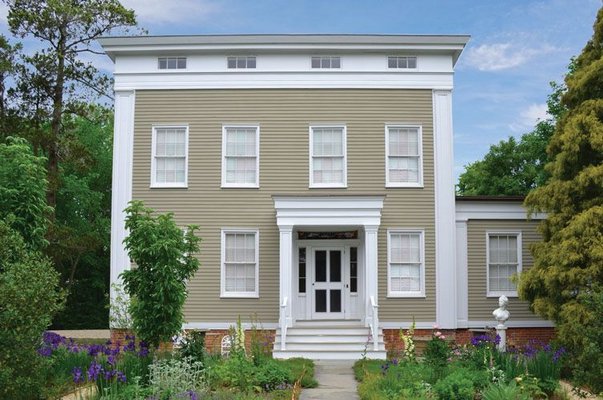
Some might say it is a sign of the times in Sag Harbor that a top Wall Street executive just purchased one of the most historic homes in the village. Thanks to shelling out $3.7 million, Joseph Evangelisti, a managing director and the head of worldwide corporate communications for J.P. Morgan Chase, now owns the Charles T. Dering House on Hampton Street, across from the Sag Harbor Elementary School.
In a way, the sale unites two businessmen who were successful in their respective fields in the 19th century. John Pierpont Morgan was one of the richest Americans until his death at 75 in 1913. His resume included creating General Electric and the United States Steel Corporation. Charles T. Dering was a whaling merchant during Sag Harbor’s raucous years as one of the primary ports for ships that roamed the oceans, returning with valuable whale oil. The house on Hampton Street was built for him in 1835.
Mr. Evangelisti joined J.P. Morgan in 1986 and rose through the ranks as an especially adept corporate communications expert. After he became the chief spokesman for J.P. Morgan Chase and its high-profile CEO, Jamie Dimon, life became especially busy with the global financial meltdown of 2008, and then, in May 2012, the announcement that the company had lost a staggering $2 billion due to a failed hedging strategy. With Mr. Evangelisti’s guidance, Mr. Dimon made the rounds of “Meet the Press” and other talk shows to explain what happened.
Presumably in 2016, even with the occasional blip on the financial screen, Mr. Evangelisti’s job is somewhat easier. And now he can enjoy the comparative quiet of a house in Sag Harbor. Helping him to afford the purchase were the proceeds from an apartment he owned on Grove Street in Manhattan. He sold it for $6.7 million, $4.7 million more than he paid for it. He may also be able to enjoy other endeavors, which include heading a PRIDE employee networking group and being active in LGBT issues. He also serves on the advisory board of Columbia University’s Masters in Strategic Communications.
His new digs, the Charles T. Dering House, has four bedrooms and four baths on 0.39 acre. The Greek Revival mansion was probably built on the site of a previous structure because it includes a circa 1780s set-back wing. Sometime after its 1835 construction, an addition was built on the south side. Among the home’s more distinctive features are a mahogany newel post and stair railing carved by the East Hampton furniture maker Nathaniel Dominy V, wide wooden floor planking that dates back to the initial construction, the original brick-floor basement, an eat-in chef’s kitchen with a butler’s pantry and original millwork throughout the house. The attic contains “eyebrow” windows along with original wood rafters and beams.
One more appealing feature: On the grounds are two large stands of boxwoods that purportedly Mr. Dering took after his marriage from his ancestral home, Sylvester Manor, on Shelter Island. Since 2010, that 243-acre property has been operating as a historic plantation and nonprofit educational farm.